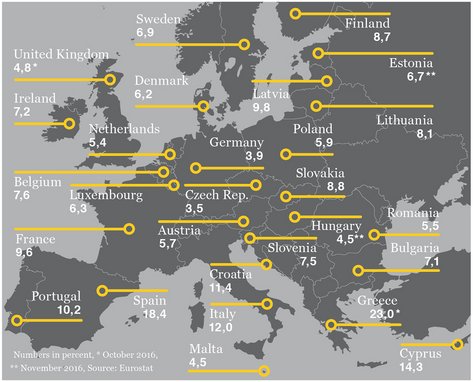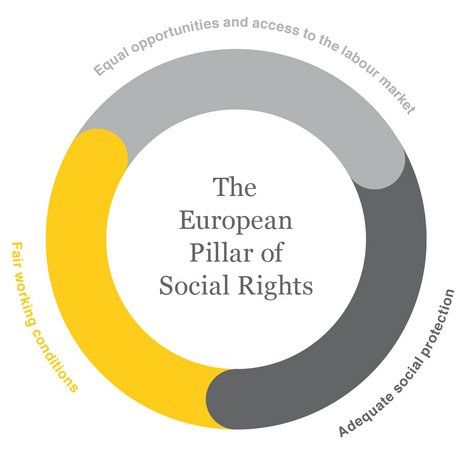 iStockphoto/Johnny Greig
iStockphoto/Johnny Greig
The EU Commission wants to create
a “Pillar of Social Rights”
What does the initiative mean for the future of social systems?
A German point of view.
ed* No. 01/2017 – Chapter 2
In Spring 2016, the EU Commission presented its initial thoughts on a “Pillar of Social Rights”1. This concept, which has gained great public interest, aims to overcome the wide scepticism in Europe as to whether the European Institutions are able to provide social fairness, general well-being and fair conditions to EU citizens. Since then, some of the cornerstones of the pillar have become clearer and it now seems indisputable that the Pillar is not what it first sounds like, that is, a package of enforceable individual rights. Rather, it formulates a set of criteria to evaluate the employment and social policies of the Member States. The degree to which they are binding can vary greatly depending on the sector.
The EU Commission has already formulated a draft2 set of principles which are divided into various policy areas. The areas of greatest interest to statutory social insurance include health and long-term care, pensions, occupational safety and health (OSH) and services for people with disabilities. Together, the “principles” form the contours of the “European social model” that has developed in Brussels over the last two decades. As a result, in some areas they once again question the social progress already achieved in various Member States. How these principles are supposed to eventually look is currently unclear; equally unclear is their implementation.

Essentially, there are only two instruments under consideration for implementing the Pillar: benchmarks and legally binding minimum standards. Benchmarks in the words of the Commission’s communications are (indicator-based) “reference criteria”. They offer the opportunity to set high goals, to measure against “the best”. In the past, Europe has already set quantitative social goals, for example, in childcare, in combatting youth unemployment and in minimising the risk of poverty. One could add further benchmarks as part of the European Pillar and make this part of the Europe 2020 strategy. Above all, these social target figures could be used as a counterbalance to purely fiscal metrics as part of the Stability and Growth Pact. However, benchmarks are not legally binding.
The exact opposite is true for minimum standards. They are embedded in European law and are therefore binding. One example is the European minimum standards for occupational safety and health which are already in force today. Every Member State can set higher standards and this often happens. Of course, there is the danger that the Member States regard these standards as a mere target. As such, it is important to set an appropriate level for minimum standards.


